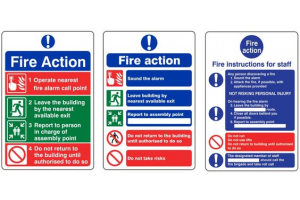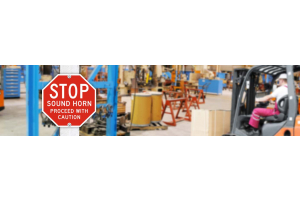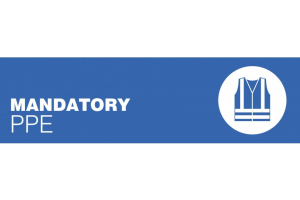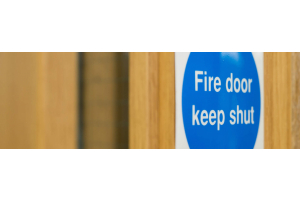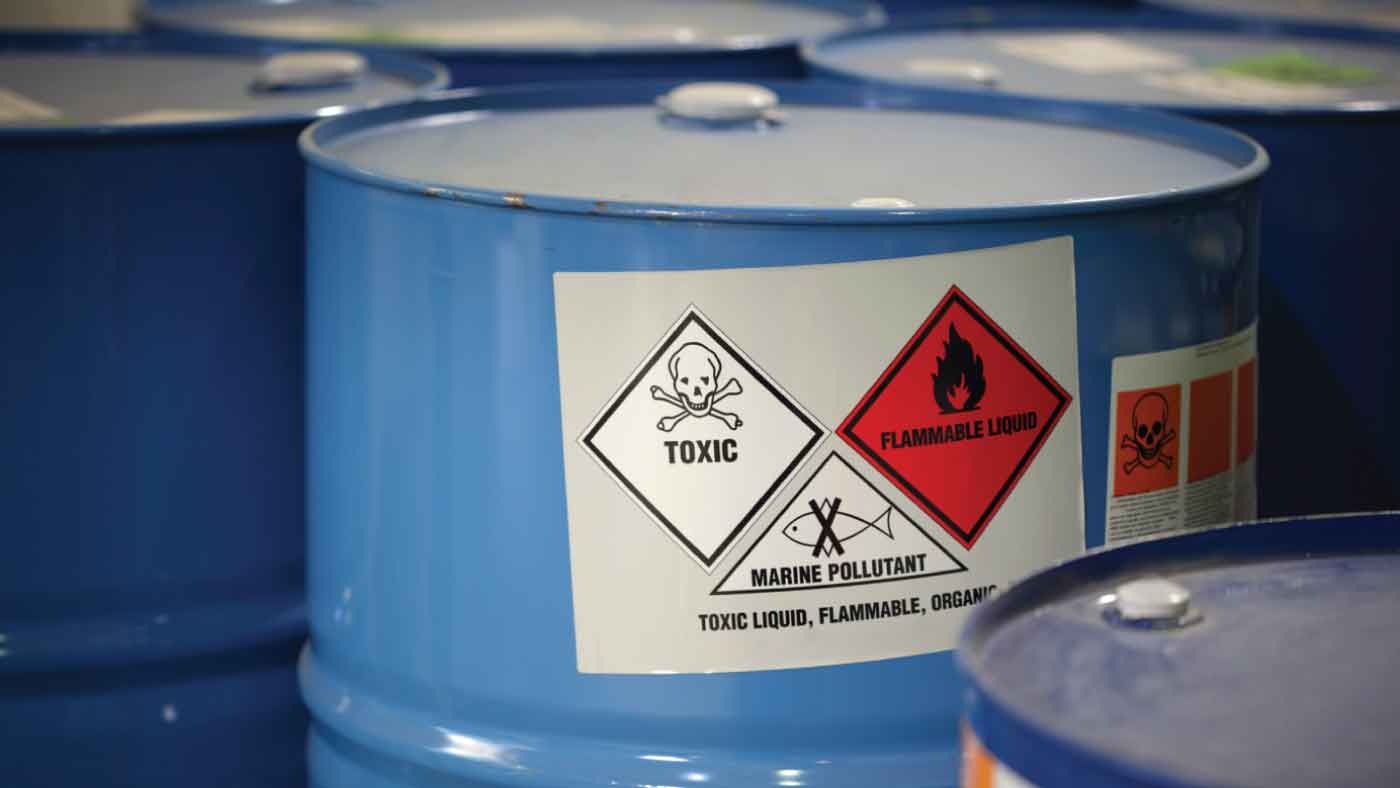
Hazardous substances and processes
Any hazardous substances that are going to be used, or processes which may produce hazardous materials, should be identified. The risks from work that might affect site workers or members of the public should then be assessed. Designers should eliminate hazardous materials from their designs. Where this is not possible, they should specify the least hazardous products which perform satisfactorily. Contractors often have detailed knowledge of alternative, less hazardous materials. Designers and contractors can often help each other in identifying hazardous materials and processes and suggesting less hazardous alternatives. If workers use or are exposed to hazardous substances as a result of their work, the Control of Substances Hazardous to Health Regulations 200216 (COSHH) make it a legal duty to assess the health risks involved and to prevent exposure or else adequately control it. There are separate regulations for asbestos and lead the Control of Asbestos at Work Regulations 200217 and the Control of Lead at Work Regulations 2002.
People may be exposed to hazardous substances either because they handle or use them directly (eg cement and solvents), or because the work itself results in the creation of a hazardous substance (eg scabbling concrete generates silica dust). Identify and assess both kinds of hazard. If hazardous substances are going to be used, manufacturers and suppliers of such substances have a legal duty to provide information. Read the label on the container and/or the safety data sheet. Approach the manufacturer or supplier directly for more information if necessary. Some hazardous substances may be on site before any work starts, eg sewer gases or ground contaminants. Assess these risks in the same way as for other hazardous substances. Information to help identify these risks may be available from the client, the design team or the principal contractor and should be contained in the pre-construction-stage health and safety plan.
Look at the way people are exposed to the hazardous substance in the particular job that they are about to do. Decide whether it is likely to harm anyone’s health. Harm could be caused by: Breathing in fumes, vapours, dust: does the manufacturer’s information say that there is a risk from inhaling the substance? Are large amounts of the substance being used? Is the work being done in a way that results in heavy air contamination, eg spray application? Is the work to be done in an area that is poorly ventilated, eg a basement? Does the work generate a hazard, eg hot cutting metal covered with lead causes lead fumes to be given off? Direct contact with skin: does the manufacturer’s information say there is a risk from direct contact? How severe is it, eg are strong acids or alkalis being used? Does the method of work make skin contact likely, eg from splashes when pouring from one container to another, or from the method of application? Swallowing or eating contaminated material: some materials can contaminate the skin and hands. The contamination can then be passed to a person’s mouth when they eat or smoke. This is a particular problem when handling lead and sanding lead-based paint. Make sure people wash their hands and sanitise on a regular basis.
Once a full assessment has been completed and where the same work is being done in the same way under similar circumstances at a number of sites, the risk assessment does not have to be repeated before every job but you should check it to make sure there are no real differences. You should continuously look out for new safer ways of working and new products, which could be safer substitutes. If, however, there are many processes that result in different hazardous substances being used in a wide range of circumstances, a fresh assessment may be needed for each job or set of similar jobs. This will make sure the assessment is relevant to the job being done and the circumstances in which it is being carried out. Remember to assess both immediate risks, eg being overcome by fumes in a confined space, and longer-term health risks. Materials like cement can cause dermatitis. Sensitising agents like isocyanates can make people using them have sudden reactions, even though they may have used the substance many times before.
If harm from the substance is possible, the first step to take is to try and avoid it completely by not using it at all. This will mean either: doing the job in a different way, eg instead of using acids or caustic soda to unblock a drain, use drain rods; or using a substitute substance, eg instead of using spirit-based paints, use water-based ones, which are generally less hazardous. However, always check one hazard is not simply being replaced by another. If the substance has to be used because there is no alternative, or because use of the least hazardous alternative still leads to significant risk, the next step is to try and control exposure. Some of the ways this could be done include: transferring liquids with a pump or siphon (not one primed by mouth) rather than by hand. Keep containers closed except when transferring; rather than spraying solvent-based materials, use a roller with a splash guard or apply by brush; using as little of the hazardous substances as possible – don’t take more to the workplace than is needed; using cutting and grinding tools and blasting equipment fitted with exhaust ventilation or water suppression to control dust; ensuring good ventilation in the working area by opening doors, windows and skylights. Mechanical ventilation equipment might be needed in some cases.
Personal protective equipment
If, and only if, exposure cannot be adequately controlled by any combination of the measures already mentioned, you will need to provide personal protective equipment (PPE). Any PPE must be selected with care. Choose good quality equipment which is CE-marked. Let the user of the equipment help choose it – they will be more willing to wear it. Explain to the user why the equipment has to be worn and the hazard(s) the equipment protects against. Respiratory protection, Respirators can protect against dusts, vapours and gases. There are many types of respiratory protective equipment (RPE), including: disposable face mask respirators; half-mask dust respirators; high-efficiency dust respirators; positive-pressure powered respirators; ventilator visor or helmet respirators; compressed air line breathing apparatus; self-contained breathing apparatus. Make sure the respirator is the correct type for the job; dust masks may not protect against vapours or vice versa. If the respirator has replaceable cartridges, make sure the correct type is fitted, that they have not become exhausted or clogged and are still in date (many filters have a limited shelf life). Have replacement filters available.
A competent person should select RPE that is both suitable for the user and the job, as this choice will depend upon a number of factors, including: the nature of the hazards and materials; the measured level of the contaminant; the period of exposure; if working outdoors, the prevailing weather conditions; suitability for each user, such as field of vision, provision for communication and the ease of movement in cramped working places, eg confined spaces. It is essential that respirators fit well around the face. Make sure the user knows how to wear the equipment and check for a good face seal. Respirators do not seal well against a beard, so when the user has a beard, alternative protection is needed, such as air-fed visors, which do not rely on a good face seal. Users need to know how the respirator should be fitted and operated and what maintenance checks they should carry out. Supervise the user to make sure they are using the respirator properly and regularly checking it for damage. Make sure the respirator does not become a source of contamination by keeping it clean. Store it in a clean box or cupboard – don’t leave it lying around in the work area.
Dermatitis is an inflammatory skin condition caused by certain irritants contained in many industrial materials. There are two general types: irritant dermatitis: usually caused by the skin coming into contact with an irritant substance. Anyone can be affected and the strength of the irritant together with the duration of exposure will affect the seriousness of the complaint; sensitising dermatitis: where a person develops an allergic reaction to a substance. The reaction may follow weeks, months or even years of use without any ill effects but once it has occurred, any future exposure to the substance will produce an adverse reaction. Reaction of the skin to an irritant varies from one individual to another. The reaction may be only a mild redness but this can develop into swelling, blisters and septic ulcers that are both unsightly and painful In addition to dermatitis, some substances can cause other skin problems, such as oil acne from bitumen-based products and skin ulcers from corrosive substances.
In the course of their work, construction workers may come into contact with many skin irritants. The most common types include: cement, lime and plaster; paint; tar, pitch and bitumen; solvents, thinners and de-greasers; certain epoxy, acrylic and formaldehyde resins; mineral oils and grease. Where protective clothing is provided (such as overalls and gloves), it must be of the right type to protect the wearer against the particular hazard they are going to encounter. All manufacturers offer advice on the most suitable gloves for specific types of hazard. When using gloves to help prevent dermatitis, users must avoid getting contaminants inside the gloves when putting them on and taking them off. It is also essential to provide washing facilities, with a supply of hot and cold (or warm) running water, soap and a means of drying the hands, to help prevent dermatitis. Advice on general PPE is contained in paragraphs 530-546, and advice on measures to protect against noise and vibration can be found in the sections specific to those topics.
Personal hygiene
Substances can also be a hazard to health when they are transferred from workers’ hands onto food, cigarettes etc and so taken into the body. This can be avoided by good personal hygiene, eg by: washing hands and face before eating, drinking and smoking and before, as well as after, using the toilet; eating, drinking and smoking only away from the work area. In cases where clothing may become contaminated, people should change out of this clothing before eating and drinking. Make sure those at risk know the hazards. Provide good washing facilities and somewhere clean to eat meals. Good clean welfare facilities can play an important part in protecting the health of everyone involved in the work. Make sure as few people as possible are exposed to hazardous substances by excluding people not directly involved in the work from the contaminated area. Further details of COSHH requirements, including the text of the Regulations themselves, are given in the COSHH Approved Code of Practice and guidance.
Sometimes workers’ health can be protected by checking for early signs of illness. Such surveillance is a legal duty in a restricted range of cases for work involving some health risks such as asbestos. Surveillance may be appropriate in other cases, eg for workers regularly engaged in blast-cleaning surfaces containing silica, or where workers are exposed to high levels of noise or hand-arm vibration, especially for long periods. Where appropriate, arrangements should be made for workers to have regular examinations by an occupational health professional to detect early signs of skin complaints, such as dermatitis. In addition, workers should be encouraged to carry out ‘self-checks’ and report skin irritations to their supervisor at an early stage.
